
Learn How I Made Princess Skateboarder’s Amazing Skateboard
This year Zoey wants to be Princess Skateboarder for Halloween. Although it took a bit of time to come up with and assemble her outfit I jumped at the chance to make her her own Princess Skateboarder’s accessories and so those felt as if they came together much quicker. I had to share my process with you in case you’re also making a Princess Skateboarder costume or some other costume that might be helped by these steps.
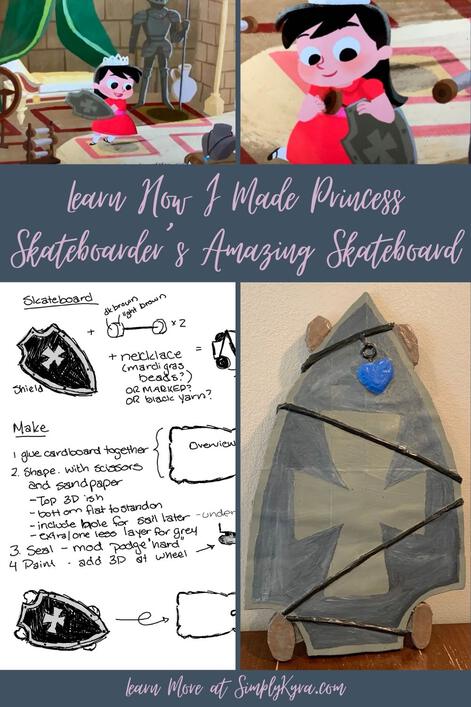
In the Princess Skateboarder video, found through the Homer website and app, Princess Skateboarder decides to escape the tall tower the dragon put her in by creating a skateboard out of a knight’s shield, a necklace, and two wooden sticks that paper scrolls were wound up on. The skateboarding part of the Princess Skateboarder video is the absolute best part and I knew I had to duplicate all the required portions.
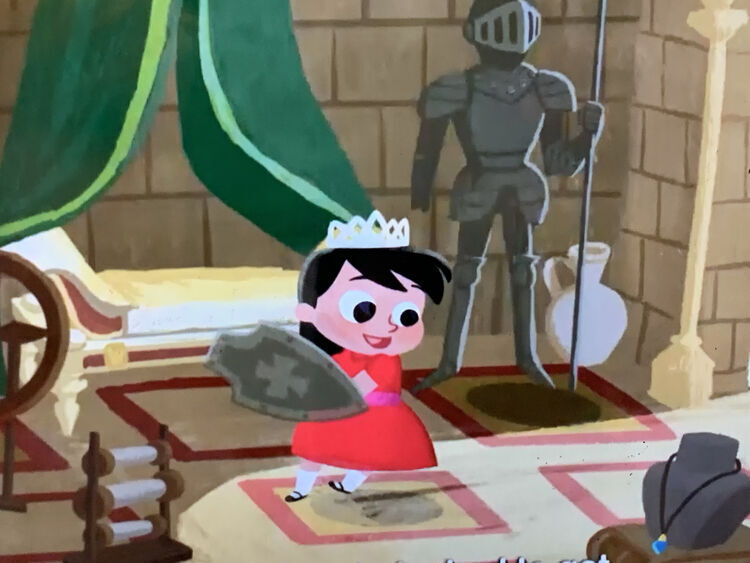
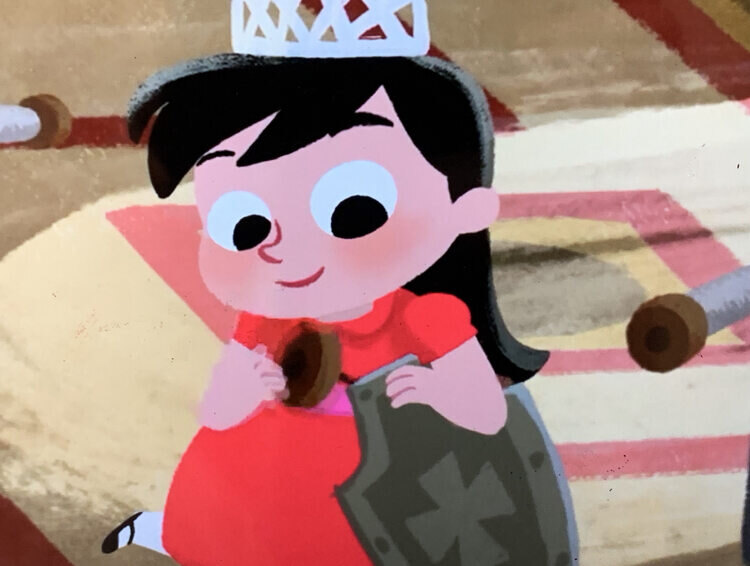
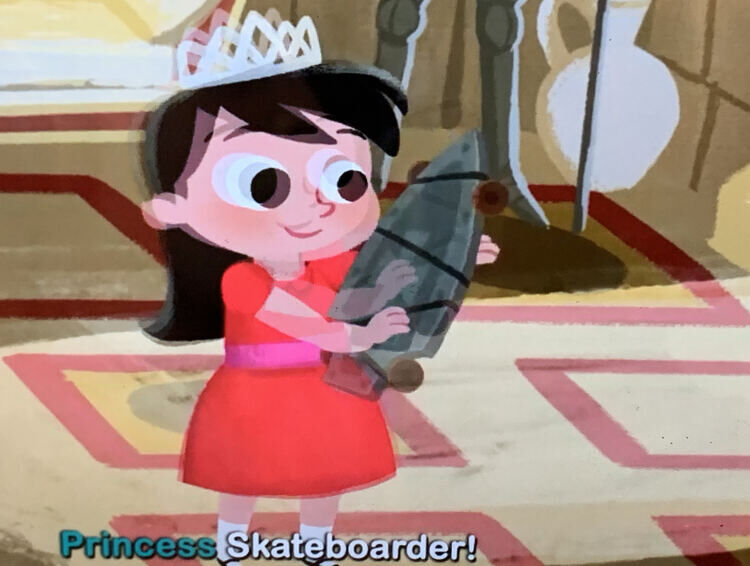
I started out by planning and making the skateboard, helmet, and attempted the three birds before going onto the outfit that I posted about last week. In this post I’ll only go over the skateboard but as several items were made at the same time some photos may include things I’ll go over in future posts.
As a quick aside I want to share all the related Princess Skateboarder posts with you in one easy to locate location in case you want to jump through them. So far this is just the second post I’ve shared but as I post more I will come back and add the links.
- Outfit
- Paper Mache Helmet and Accessories
- Dowel and Felt Sail
- Final Overview of the Costume
Planning the Skateboard
When I first started brainstorming the idea of Princess Skateboarder’s skateboard I considered briefly just buying one. I looked online filtering by diamond shaped ones to my husband’s surprise because he didn’t realize the skateboard is supposed to look like a knight’s shield as that’s what it was created from. Although I stumbled upon a Kryptonics Stubby skateboard, on Amazon, that seemed to be mostly the right shape I decided not to get it. This was mainly because Zoey has no actual experience with skateboards and using one in a potential crowd seemed simply wrong. Additionally, other than the vague shape this skateboard doesn’t look like a knight’s shield and most of the positive reviews seem to be for dogs riding it rather than for kids. I decided to instead make a fake skateboard and, later on, if Zoey becomes interested in skateboarding we could always buy her one that was based on reviews and specs rather than simply it’s aesthetics. After going through these deliberations I hopped on my reMarkable to sketch out how I might make this Princess Skateboarder item.
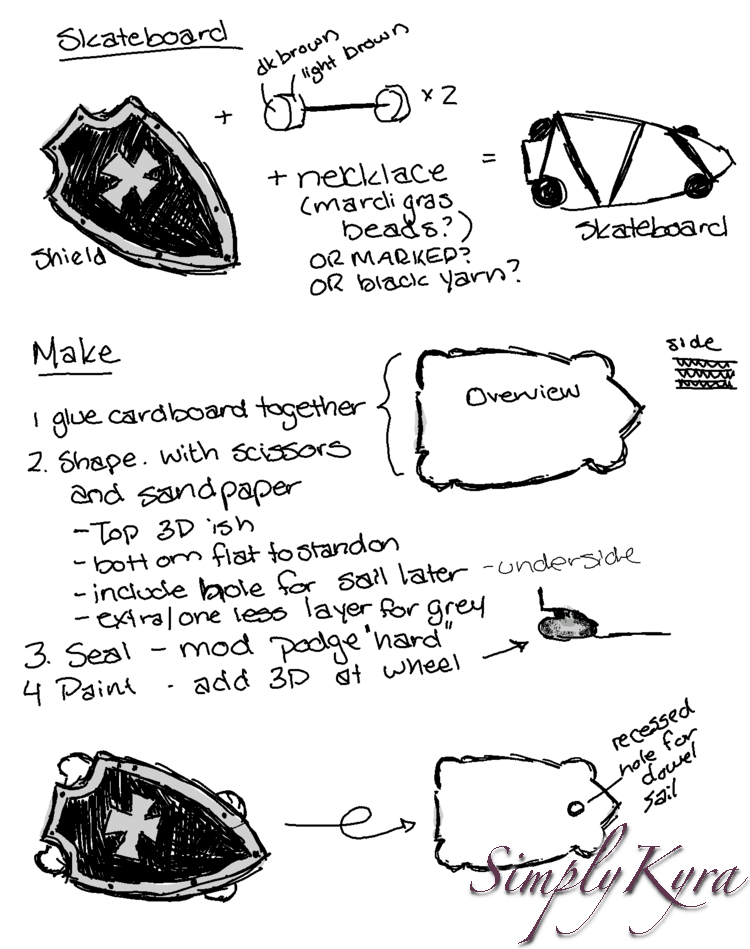
In a previous question I poised about this costume on Facebook someone mentioned that I could find knight accessories at the Dollar Tree so I headed over to our local one to see what I could see. There weren’t any knight costumes or parts to be seen but I did find a crown, used in the outfit, and some beads for Mardi Gras that I was planning on using to wrap around the skateboard like the Princess does with her necklace. In the end I decided to forgo the Mardi Gras beads as I didn’t want them crushed by the weight of Zoey standing on them or the skateboard as a whole. Instead I decided to go another way to add the necklace to the skateboard. And so without further ado this is how I constructed Princess Skateboarder’s skateboard for Zoey:
Assembling the Skateboard Base With Cardboard Boxes
I wanted the skateboard to be incredibly sturdy and allow Zoey to actually stand on it even though it doesn’t move so I started saving all the cardboard boxes we received until I knew we had more than enough. I then got to town opening the boxes up and comparing their sizes. The boxes that were large and sturdy were put in my to use pile while the shorter and flimsier ones were first split into smaller parts.
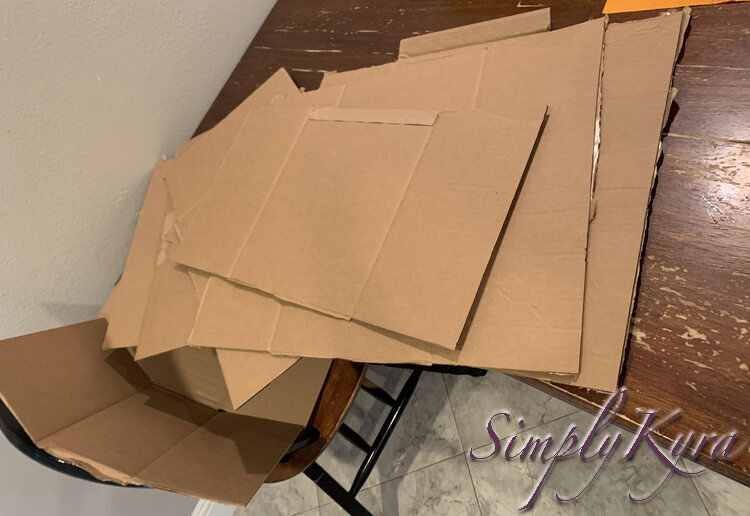
I then looked through my Mod Podge collection and noticed I had several bottles of the Mod Podge Outdoor version so I grabbed the one with the least amount left inside and got started. I went through way more Mod Podge than expected as I finished the remnants in the first one and then went through an entire other larger jar of it while still working on assembling the base. Overall my process was simple although, looking back, I could’ve saved more Mod Podge if I had shaped the cardboard pieces ahead of time. This time; however, I basically stacked the boxes making sure to rotate each one so they’d be more secure and glued each layer together one by one making one large sturdy piece of cardboard.
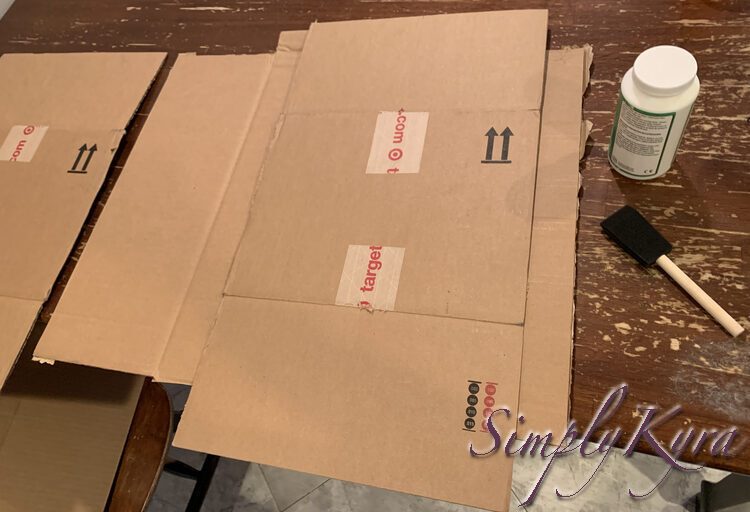
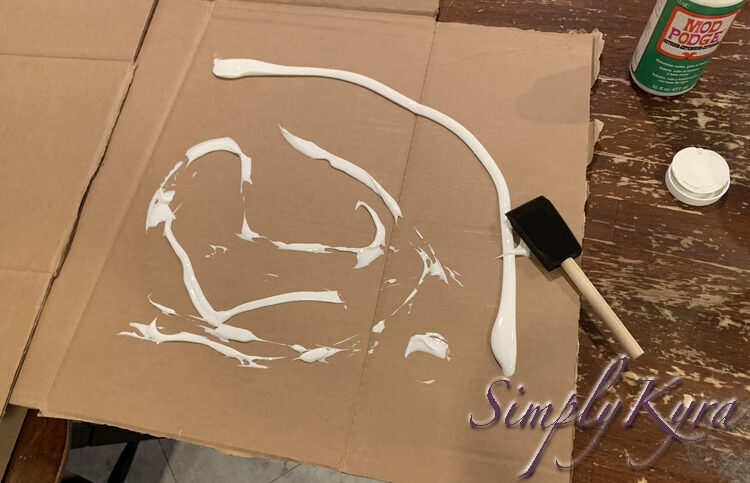
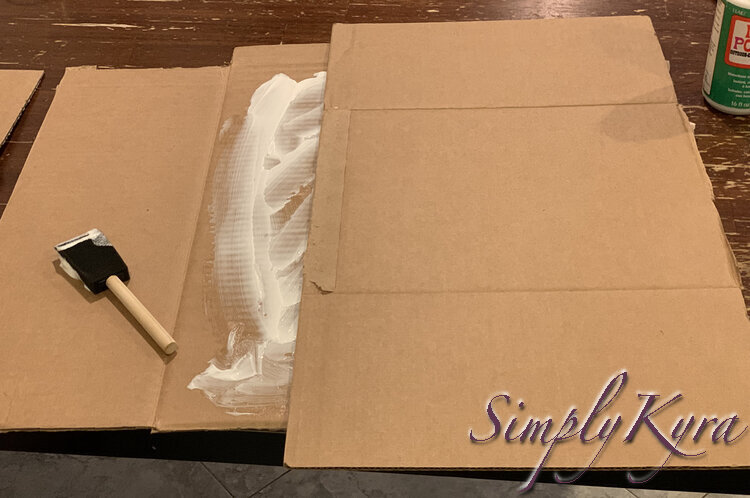
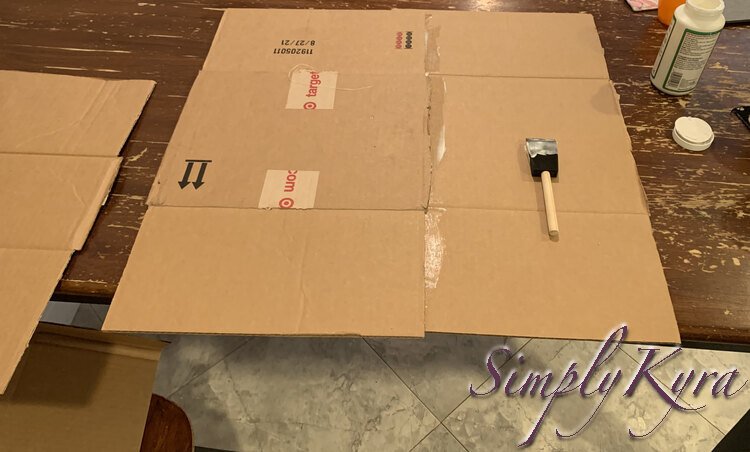
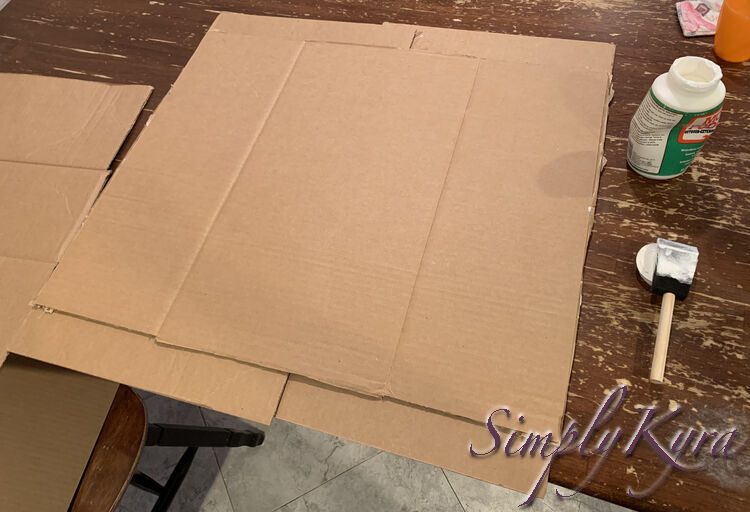
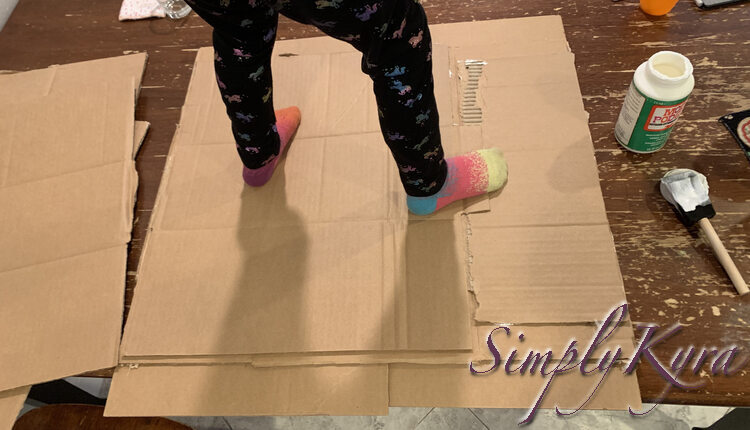
I was finally done adding layers but then I saw a cereal box in my pile of saved cardboard and realized that a light colored box on top would probably make it easier to sketch out the skateboard plans. I only had one so I quickly headed to our pantry to find another unopened box so I could fully cover the cardboard with this final matching thinner layer.
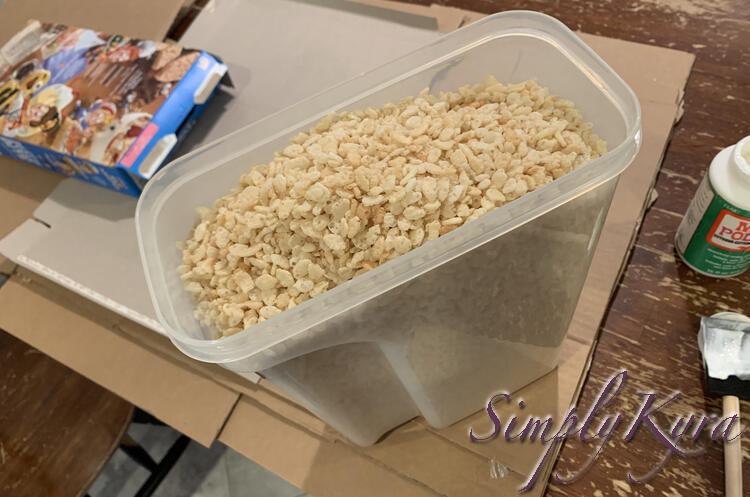
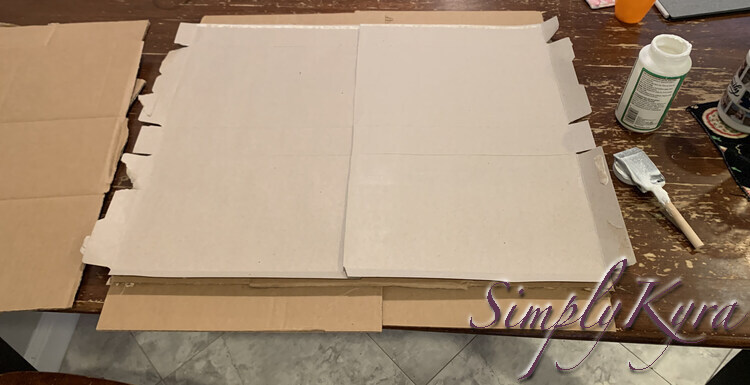
With all the needed layers glued together it was time to find a safe place to lay the cardboard out so it could dry without being bumped. I also knew I needed a heavy weight to hold the layers down so they could be as securely glued down as possible. I ended up placing the cardboard beside our couch so the side table could keep the four corners down. I then grabbed my hand weights to add more pressure.
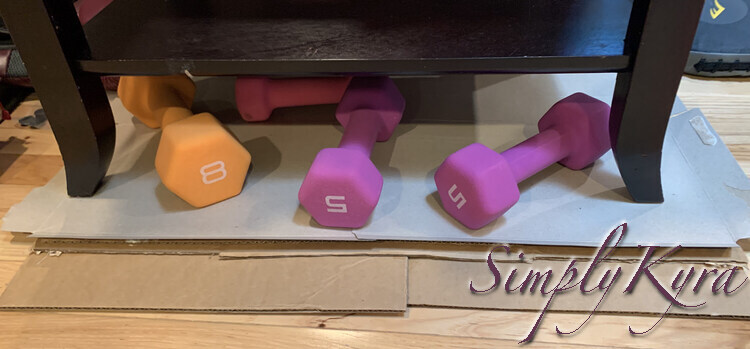
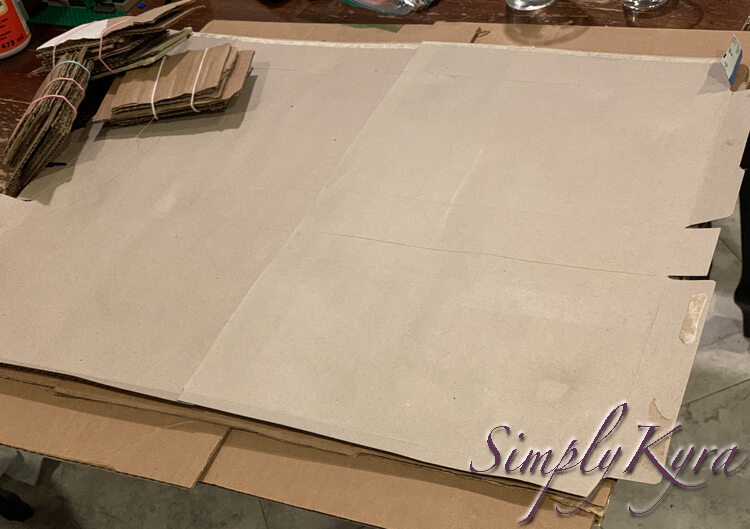
Looking back I’m glad I added the weights but wish I had distributed their weight more evenly. In the above photo you can see where the side table legs were along with a few imprints where the hand weights were. Maybe I could’ve grabbed a thick and sturdy book or something to go between the cardboard and end table legs to better distribute the weight over a greater area and thus cause the entire cardboard to be more even and less puckered in places.
Designing and Cutting Out the Skateboard Shape
With the base assembled and dried it was time to design how I wanted the skateboard to look. To do this I grabbed my base, a pencil, and my phone with a selection of screenshots from the video. Looking at the cardboard I realized it was too square like and I wanted the final skateboard to be more rectangular. That said I also wanted to take advantage of as much of the space as I could. As such I used the entire length of the cardboard for the length of the skateboard while sketching it out while also using most of the width to make it so it would still be rectangular but also use as much space as was viable. I started out by referring to the screenshot of the shield itself and made a point at the top where the edges will join before going to the other end to make the flat back of the skateboard. After joining those two ends together I flipped between the three screenshots at the top of this post to get the wheels, necklace, and other details in the shield added so I could easily add the details to my skateboard in the future.
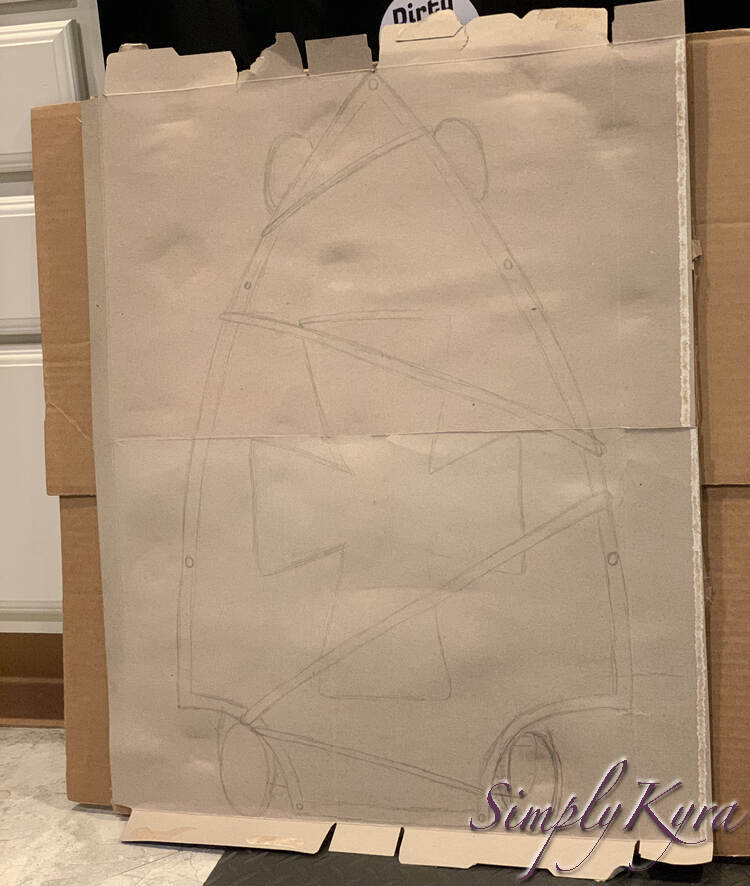
Originally I was also planning on adding the details of the necklace and wheels to the underside of the skateboard too. That said I didn’t want to include them now as it was hard to line up the two before the skateboard shape was fully cut out. I had planned to cut it out, mark the sides where the necklace was, and then line them all up by joining those points on the underside. Instead I left the back blank and other than adding a protective layer of Mod Podge at the end, it’s still just a cardboard box.
With the sketch drawn it was time to cut out the skateboard. Up until a bit ago I hadn’t factored in how sturdy the skateboard base was going to be so I had planned to use scissors and X-Acto knives at this point. By now I had a growing realization that this wouldn’t work. I started trying to brainstorm other ways to cut the cardboard to the proper shape before thinking about using a serrated knife like a hacksaw or something. As we don’t own anything like that I hopped onto Amazon for an idea of what might be available and came across an electric knife as the heading including crafting foam along with the normal uses of carving meats, poultry, and bread. I remembered we had one that Matt used to use to carve the turkey although we haven’t used it in years. I dug it out of the cupboard and decided to use that… although I decided to not jump in right away as it was late at night and instead waited for mid-afternoon the following Saturday so the noise wouldn’t be too bad for the neighbors.
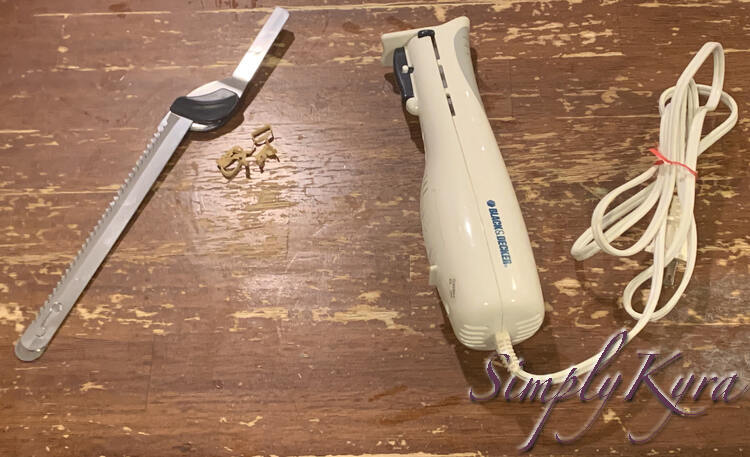
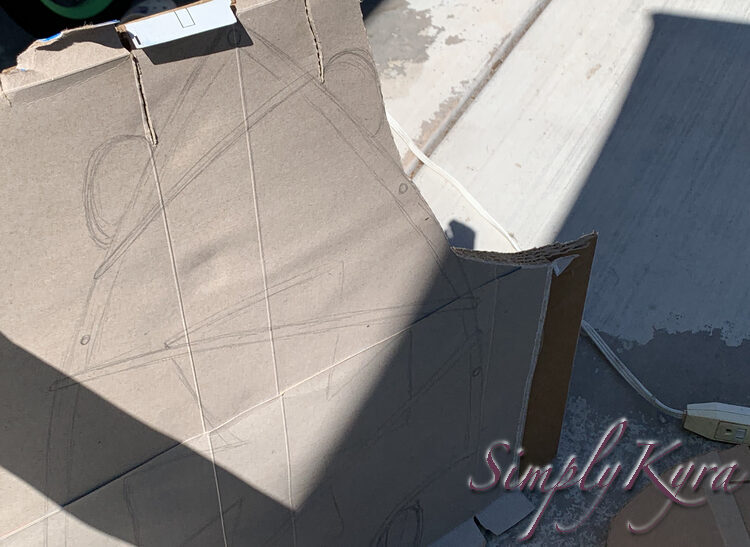
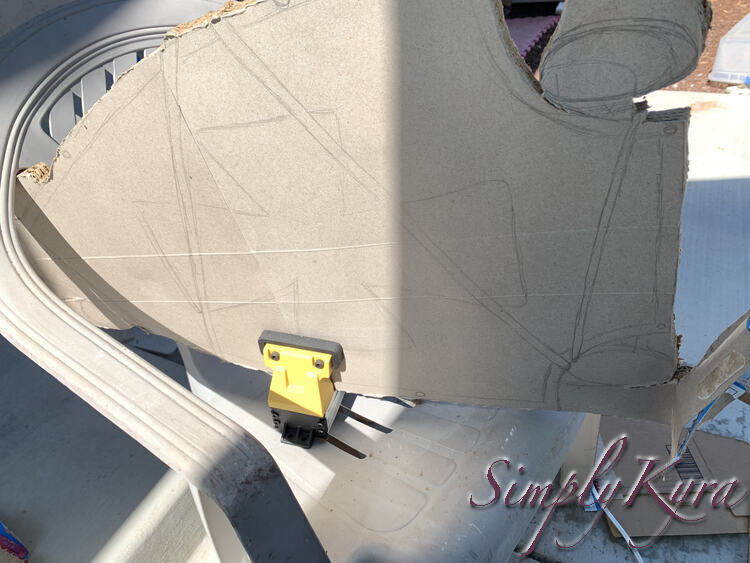
After cutting this, and the birds I was also attempting to make, I could feel my hands shaking as it remembered the vibrations of the knife. As such I decided, once I moved the knife, skateboard, and birds inside and cleaned up the cardboard, to save the rest for later. Once I was ready to continue I grabbed some sandpaper and smoothed out the ragged edges and the overlapping cereal boxes on top.
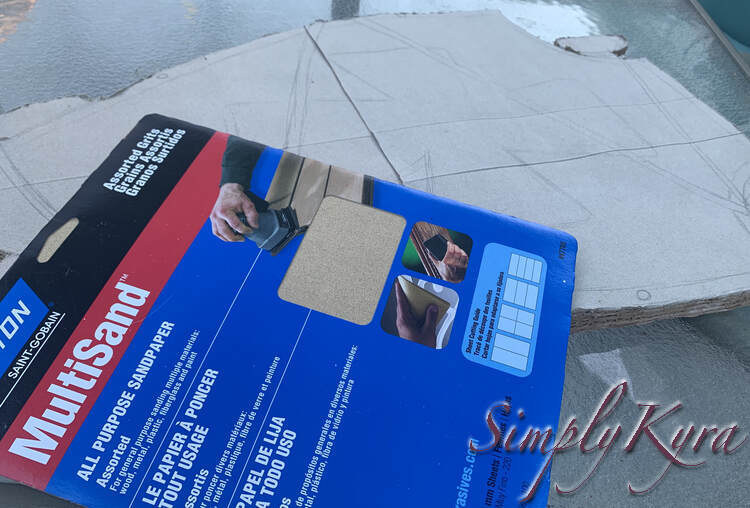
With the cutting and sanding completed it was time to move onto the next step!
Detailing the Skateboard
When I sketched out the outline of the skateboard I made sure to also draw out the details I saw like the cross in the center of the shield, the border, and the necklace cord itself. I had a plan to make the grey bits (the cross and border of the shield) recessed compared to the dark grey bits and so decided to use paper mache to create that height difference. At this time I had already used paper mache on the helmet, will post about it next week, and so already had the brown paper, foam brush, and a bottle of Mod Podge out and ready to use. In the end I only added a couple of layers of paper to the dark grey section of the shield so the height difference between the two parts aren’t as great as I had planned. That said I love how the necklace and wheels turned out which may not have happened the same way if I hadn’t used paper mache at this point so I’m really glad I proceeded this way.
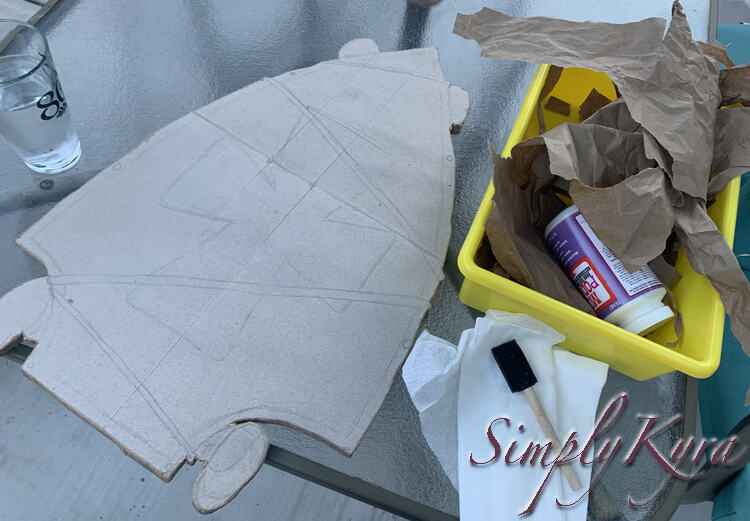
I wanted the necklace cord to be raised and apparent against the rest of the shield. For the first section I created the 3D effect by rolling up a piece of paper, gluing it down, and then repeating the process by overlapping rolled up pieces of papers to keep it going all the way across. That worked but it was cumbersome so I decided to change up my plan for the other sections. To change it I went to my yarn stash and grabbed a worsted brown cotton yarn which I then used for each crossing section of necklace on the shield. For each section I lined up a length of yarn to match that section’s length, folded it and remeasured three times so I’d have four matching lengths of yarn, cut the end from the ball, and twisted the yarn so it wouldn’t come apart too easily. I then used my foam brush to add Mod Podge to that section, stuck the yarn down, and then drizzled, dripped, and tapped more Mod Podge overtop. After using paper mache to attach more paper overtop, so it was secured, I then went on to the next section to repeat the process again.
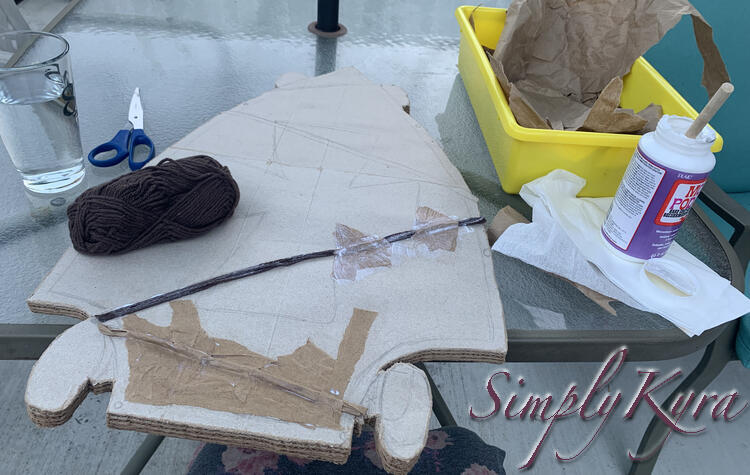
At this point I resumed thinking about the sail used by Princess Skateboarder in the video to get over the moat. In the video she flipped over her skateboard, created a sail on a wooden mast, pressed the mast’s bottom to the front the boat, and sailed across the moat. When planning before I had picked up some wooden dowels from Michael’s Arts and Crafts that I was still planning on using to make the sail although I hadn’t started yet. I originally planned to have Zoey also flip over her skateboard and thus was planning on making a hole in the cardboard for the wooden dowel mast to sit in. Over the last bit of time; however, I had started worrying about the top of the skateboard getting ruined if Zoey stood in her boat and, as such, I decided to take some creative license and have the sail rest on the top of the skateboard instead. Rather than making a hole in the skateboard I started wondering if I should add a pendant to the necklace near the front of the skateboard where the mast should go and have the connection point between the necklace strand and the pendant be more functional for the mast. I hadn’t made the sail yet but as I had already bought the dowels I was able to grab the largest one, place it in the center of the skateboard near the necklace, and use my pen to make an outline of it’s size. I decided to use the yarn to build the necklace’s connection point and then grabbed some extra napkins to make the pendant itself. I decided to go with a heart shaped pendant to match the Dollar Tree’s crown I had bought to go with Princess Skateboarder’s outfit. Once the yarn and heart-shaped napkin where glued down I grabbed more brown paper and covered it all up to smooth the whole thing out and shape it better.
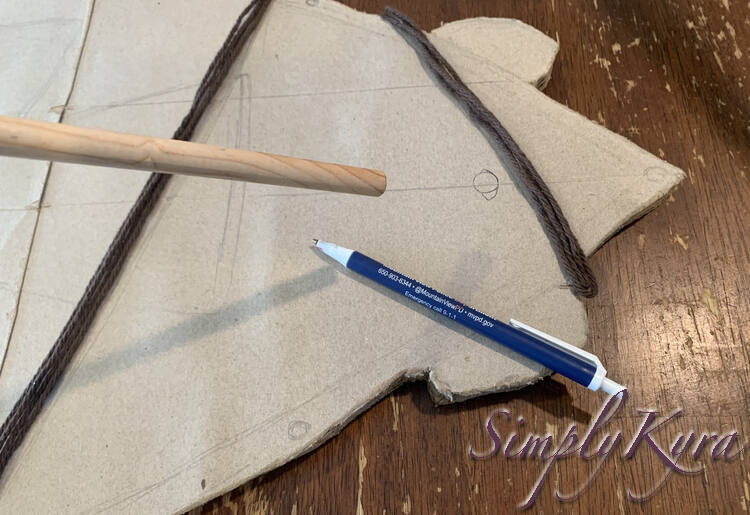
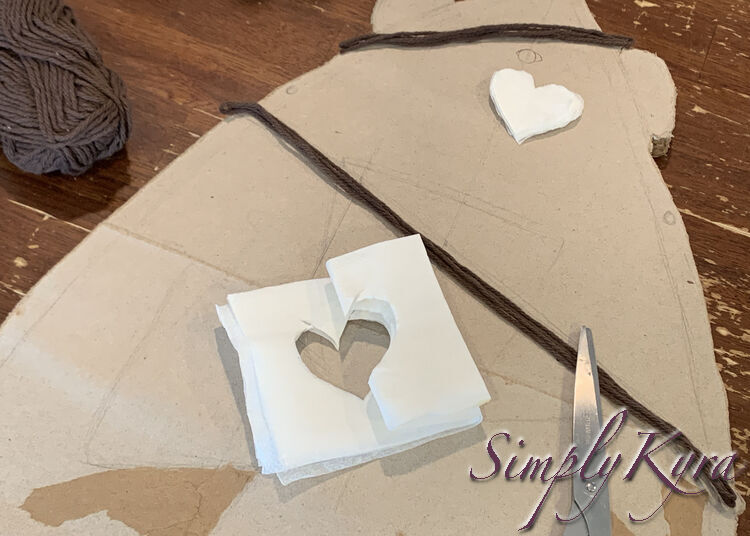
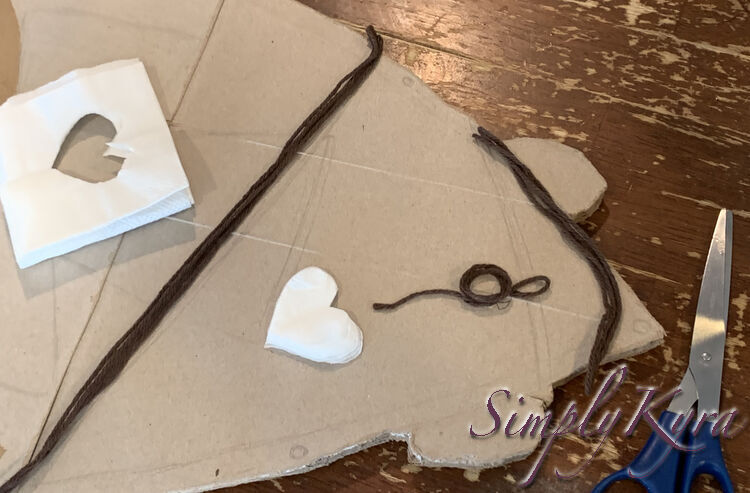
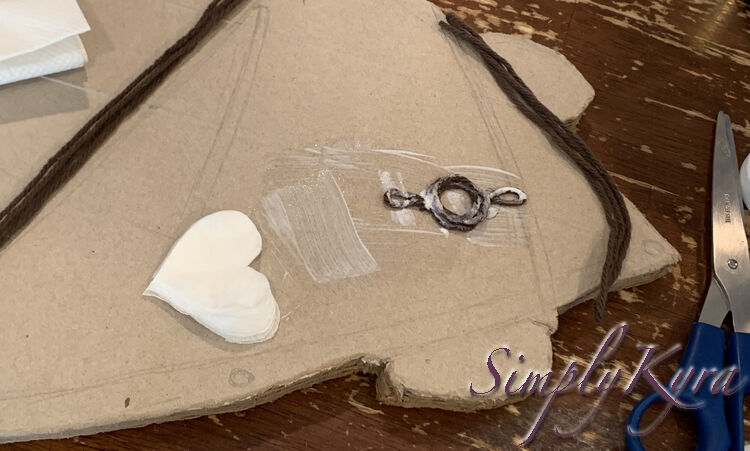
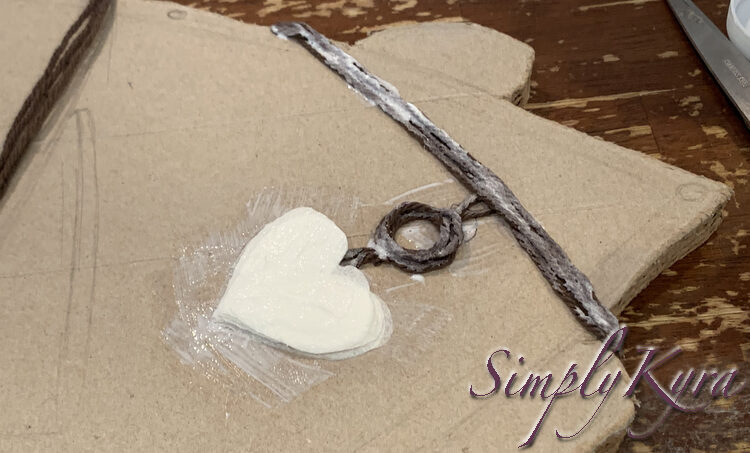
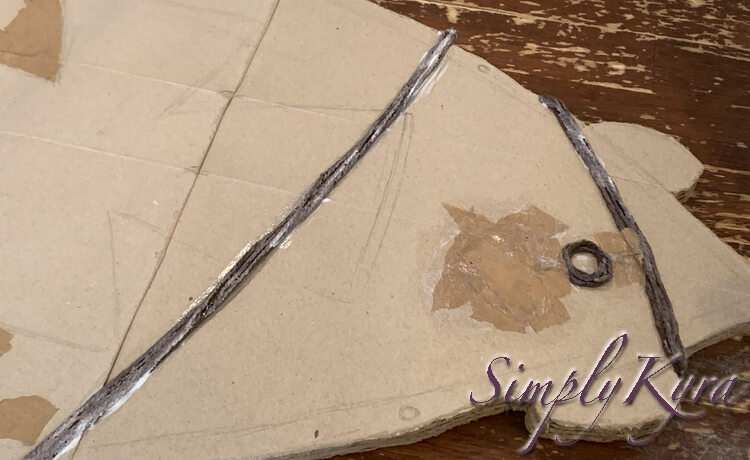
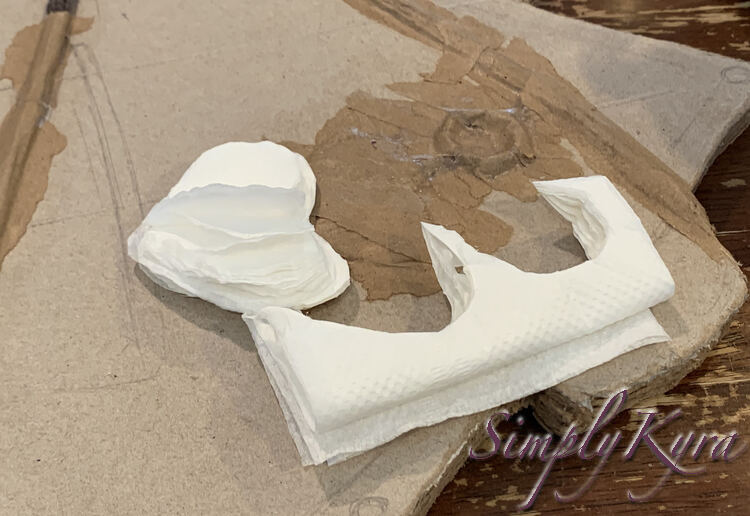
Once the pendant was created it was time to go over the rest with paper mache. I had planned to only cover up the dark grey section of the shield but with the yarn necklace I realized I now needed to go over it’s entire strand so it’s firmly fixed in place. This way it would also be easier to paint as the yarn is totally covered. I made sure to glue down several layers of paper in the dark grey sections hoping there was still a mostly obvious height difference in the future. While doing this I also realized that I wanted to shape the wheels a bit so I added thicker paper, that I had cut off of the helmet, and used excess paper to help hold it down and round out the edges.
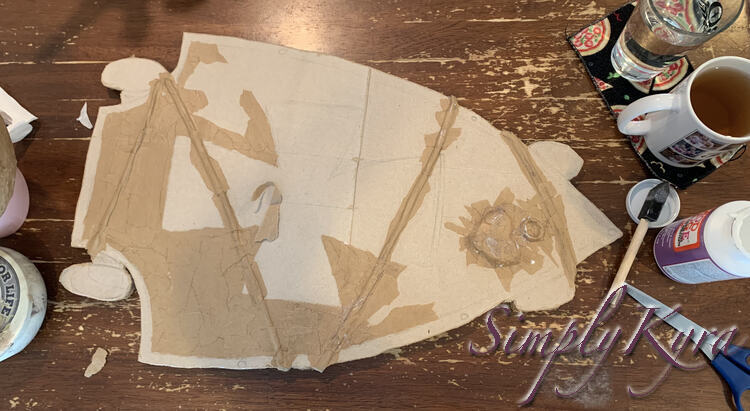
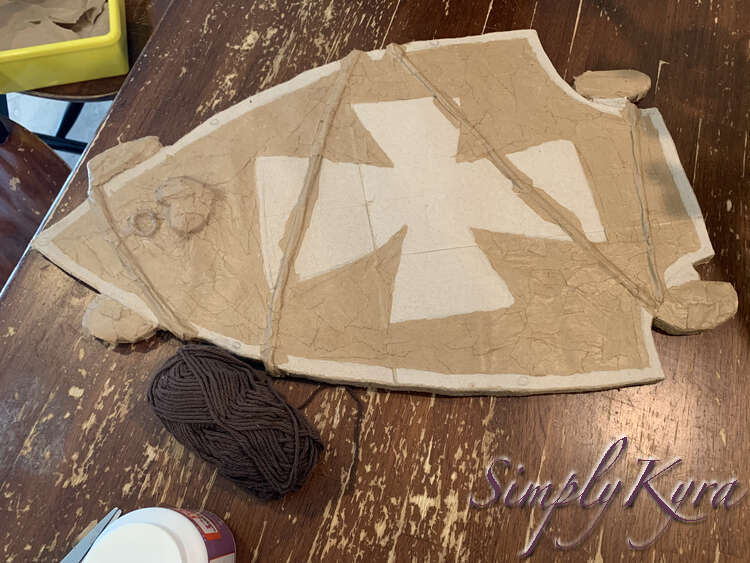
I could’ve added more layers of paper mache to make the heights of the sections more drastically different but I decided to stop here so the skateboard would still be easy to stand on for Zoey and have the paint speak for the sections instead.
Painting and Protecting the Skateboard
I went with simple acrylic craft paint to color the skateboard as I felt it would be bright and sturdy enough for the task. I also had the proper colors on hand from buying it years ago for the kids to decorate rocks again although they’ve only used it once or twice. As I had a light grey available, but not a dark one, I decided to start with the light grey sections. I thought this was going to take me several days so I decided I’d go to Michael’s the next day to buy dark grey as I worried mixing it myself would cause some areas to be too dark or light compared to others. I needn’t have worried as I instead painted both this and the helmet in one night and loved how they looked with the dappled dark grey caused by combining old clumpy white paint with black acrylic paint. Anyway, once I painted the light grey sections I referred to the Dollar Tree crown and painted the heart-shaped jewel a bright blue. I then grabbed black to paint the necklace cord, and then added clumpy white to the leftover black paint to make a dark grey so I could continue right away. I finally painted the wheels brown but added some of the grey on top to make it look more used.
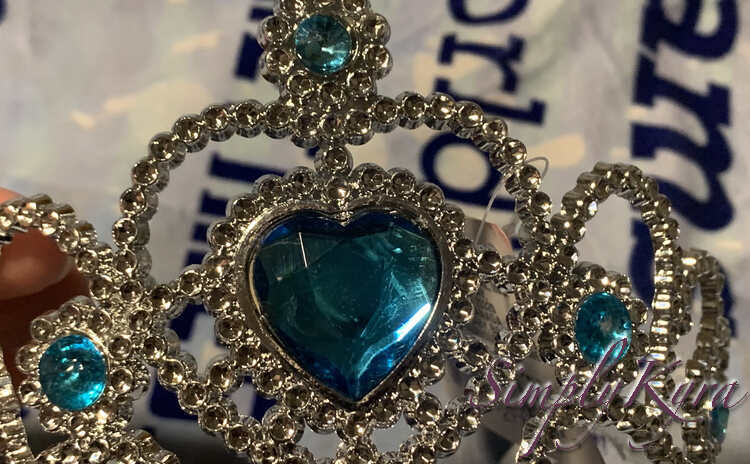
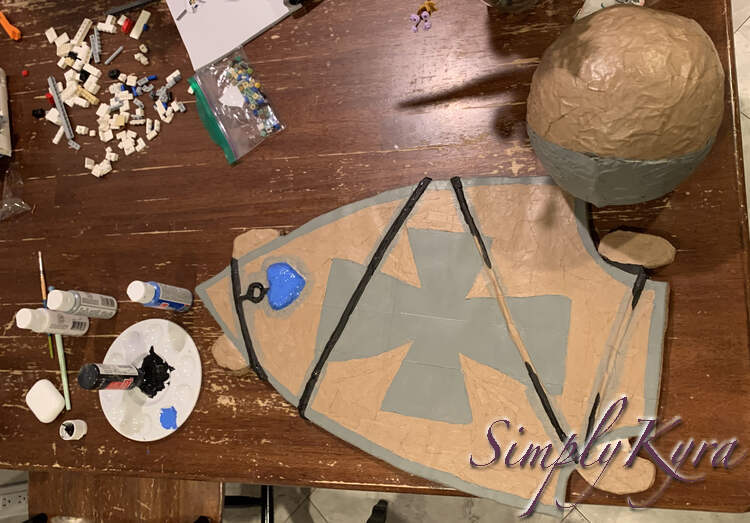
Once all the parts of the skateboard, and helmet, where done and dried it was time to protect the final product with a layer of Hard Coat Mod Podge. For the skateboard I did this in three separate sessions. The first session I painted the top of the skateboard and along the edge of the sides as I didn’t want Mod Podge to dribble down and stick the skateboard to the table. In the second session I flipped the skateboard over and applied more Mod Podge to the sides and the entire underside of the skateboard. Just in time for the final session I realized I could put plastic cups under the skateboard so I was free to paint all the sides and the top without worrying about the skateboard getting stuck to the table.
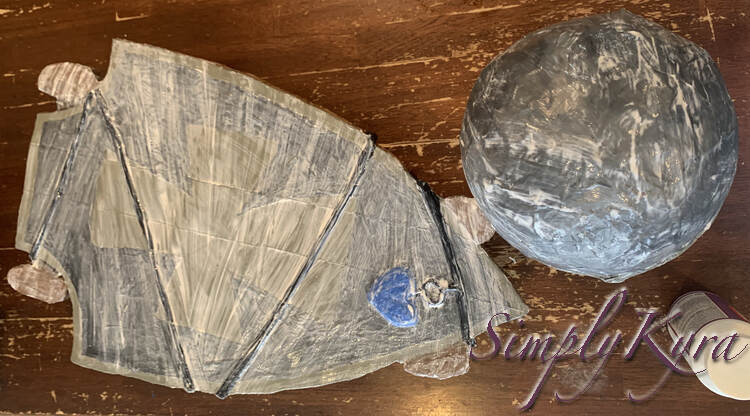
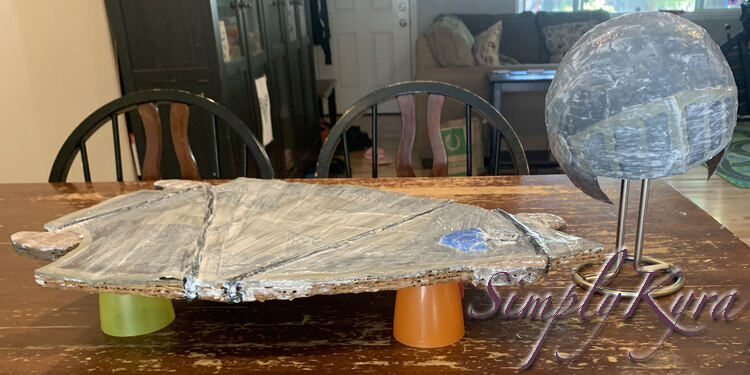
I love how it turned out but I do have a small regret. As I did the layers of Mod Podge I realized my foam brush was getting noticeably used. By the end there was a small hole on either side where the brown dowel handle started poking through the foam. The frugal part of me didn’t want to use a new brush close to the end so I had just kept using it. After the final layer of Mod Podge had dried I realized I that the odd bit of brush had remained encased inside it. Overall the bits aren’t too noticeable but it is something to keep in mind the next time I might make this.
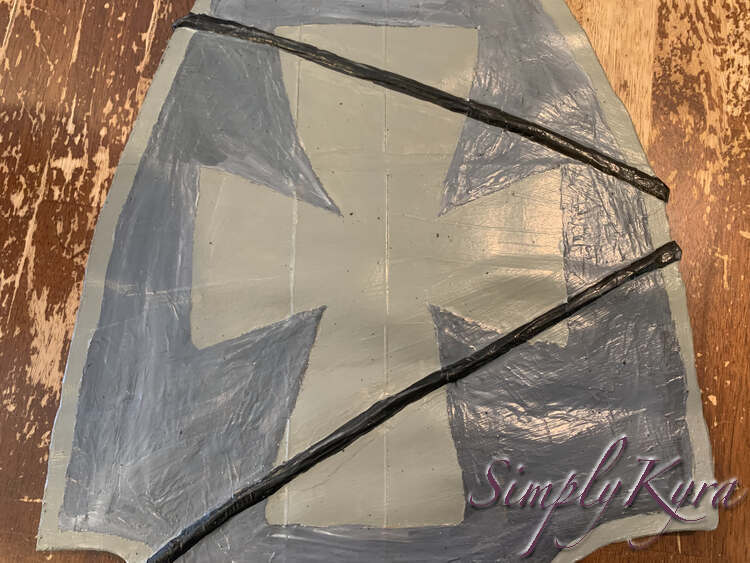
And with that Princess Skateboarder’s skateboard was done!
The Final Skateboard
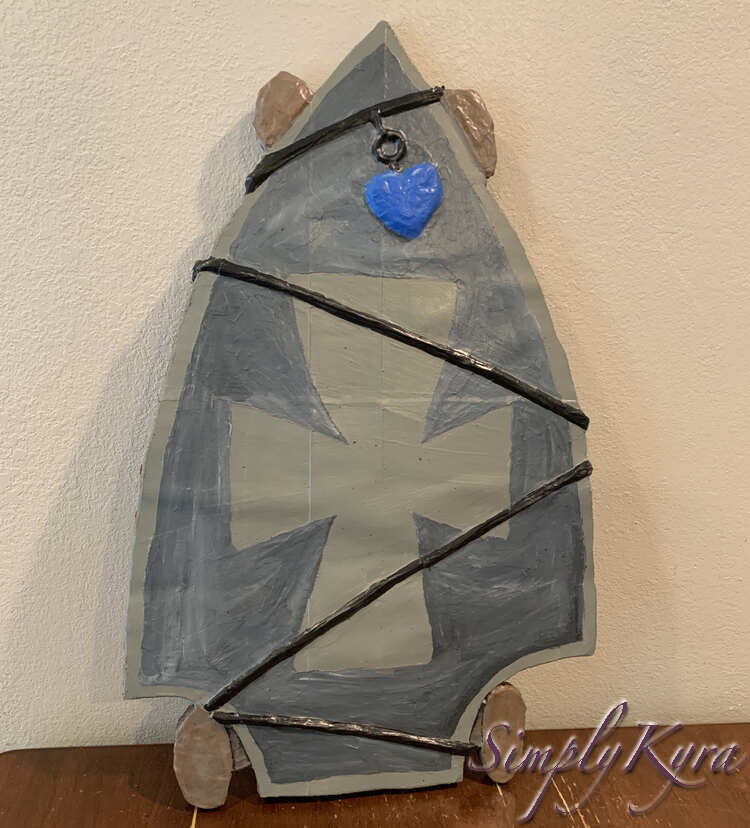
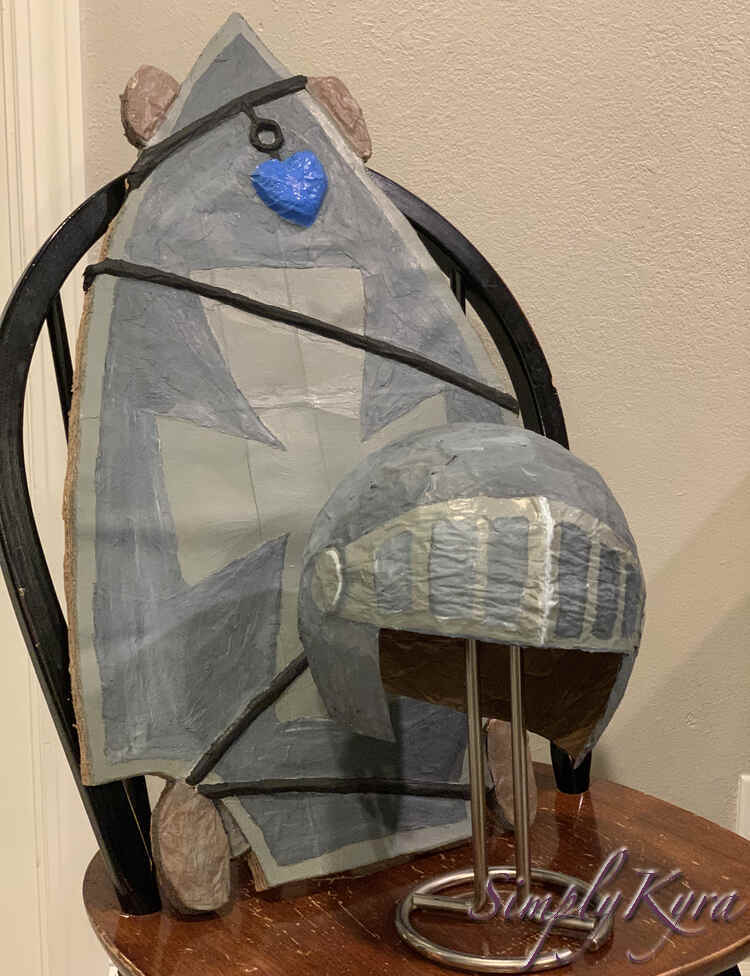
I absolutely love how the skateboard turned out and I’m so glad I thought to use an electric knife as I don’t know how I would’ve cut the cardboard with anything else. Although I made this specifically for Zoey’s Princess Skateboarder’s costume I wonder what else I could make following similar steps.
I’d love to hear from you in the comments below if this helped you make a costume whether it’s for Princess Skateboarder herself or for something else entirely. If it was for something else what did you make? I’d love to hear about it and I hope you’re having an awesome day!
If you’re interested in getting any of my future blog updates I currently come out with a new one every Wednesday and share them to my Facebook page and Instagram account. You’re also more than welcome to join my email list located right under the search bar or underneath this post.

